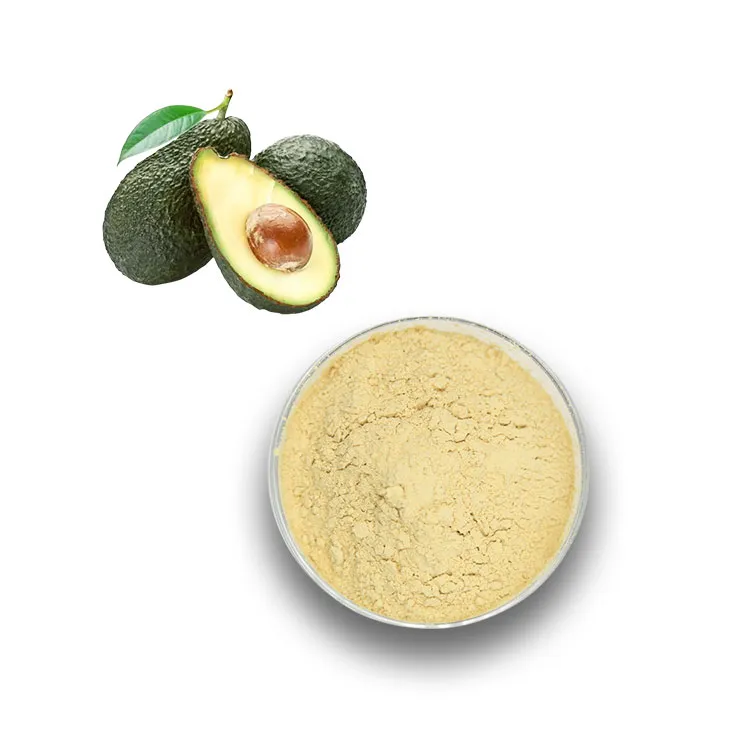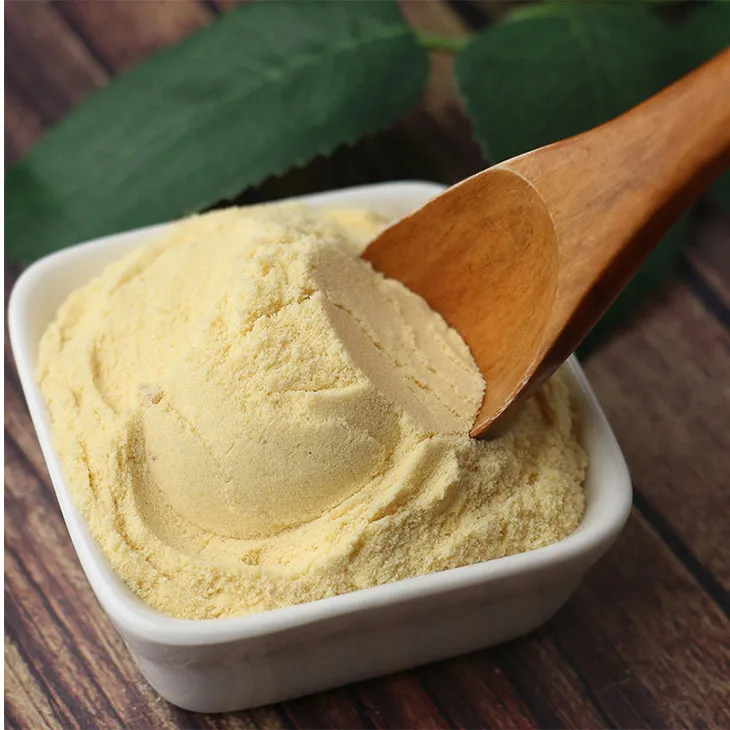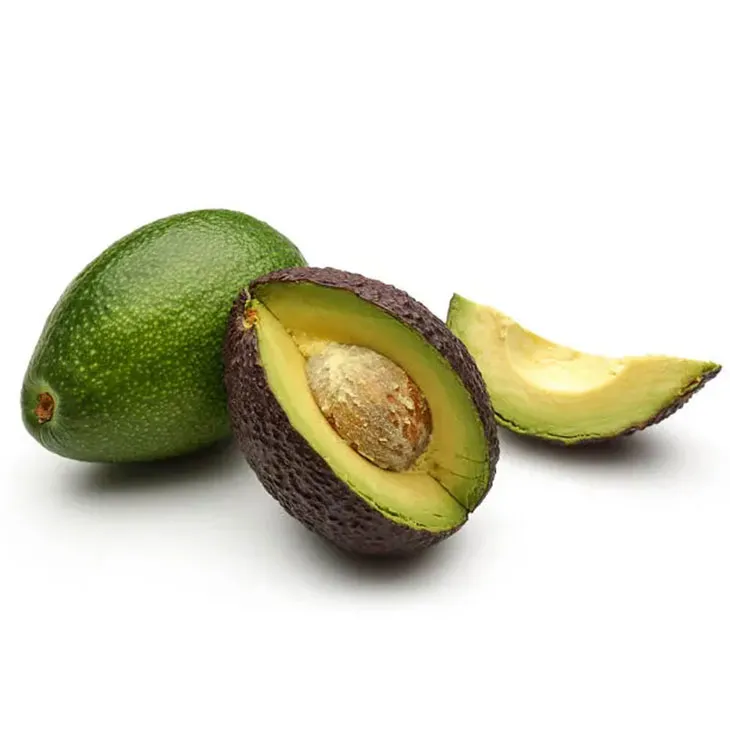- 0086-571-85302990
- sales@greenskybio.com
The process of extracting characteristic avocado components from avocado extract powder.
2024-11-27

1. Introduction
Avocado has gained significant popularity in recent years due to its rich nutritional profile. Avocado Extract Powder is a concentrated form of avocado, which serves as a valuable source for extracting distinct components. These components can be used in various industries, such as the food, cosmetic, and pharmaceutical industries. The extraction process is complex and requires careful consideration of multiple factors.

2. Selection of Extraction Solvents
The choice of extraction solvents is crucial in the process of isolating avocado - distinct components from Avocado Extract Powder.
2.1. Organic Solvents
- Hexane: Hexane is a common non - polar organic solvent. It is effective in extracting lipids from Avocado Extract Powder. Lipids are important components of avocado, and they can be used in the production of oils, emulsifiers, and other lipid - based products. However, hexane extraction requires strict safety measures as it is highly flammable.
- Ethanol: Ethanol is a polar organic solvent that can extract a wider range of components compared to hexane. It can dissolve not only lipids but also some polar compounds such as phenolic compounds and flavonoids present in avocado. Ethanol - based extraction is often preferred in the production of natural extracts for the food and cosmetic industries due to its relatively low toxicity and ease of removal.
2.2. Aqueous Solvents
- Water: Water can be used as a solvent for extracting water - soluble components from avocado extract powder. Water - soluble vitamins, minerals, and some polysaccharides can be isolated using water - based extraction methods. However, the extraction efficiency may be lower compared to organic solvents for lipid - rich components.
2.3. Solvent Mixtures
- Combining different solvents can often lead to better extraction results. For example, a mixture of ethanol and water can be used to extract both polar and non - polar components simultaneously. The ratio of ethanol to water can be adjusted according to the specific components to be extracted.

3. Operation Conditions
Precise operation conditions play a vital role in the extraction process.
3.1. Temperature
- For hexane extraction, a relatively low temperature is often preferred to prevent solvent evaporation and reduce the risk of fire. The optimal temperature range may be around 40 - 60°C.
- Ethanol - based extraction can be carried out at a wider temperature range. Higher temperatures can increase the solubility of components in ethanol, but excessive heat may also cause degradation of some heat - sensitive compounds. A common temperature range for ethanol extraction is 50 - 80°C.
- When using water as a solvent, temperatures close to the boiling point of water (around 100°C) can be used to enhance extraction efficiency, but this may also require appropriate pressure control.
3.2. Extraction Time
- The extraction time needs to be optimized. In general, a longer extraction time can increase the yield of extracted components. However, overly long extraction times may also lead to the extraction of unwanted impurities.
- For hexane extraction, an extraction time of 2 - 4 hours may be sufficient for lipid extraction. For ethanol - based extraction, the extraction time can range from 1 - 6 hours depending on the nature of the components and the extraction conditions.
- When using water extraction, extraction times can be relatively longer, sometimes up to 8 - 12 hours for complete extraction of water - soluble components.
3.3. Agitation
- Agitation during the extraction process helps to improve the contact between the solvent and the avocado extract powder. This can enhance the extraction efficiency.
- Slow agitation can be used for gentle extraction, while more vigorous agitation may be required for faster extraction. However, excessive agitation may cause mechanical damage to the components or lead to emulsion formation in the case of liquid - liquid extraction.

4. Separation Procedures
After the extraction, strict separation procedures are necessary to isolate the desired avocado - distinct components.
4.1. Filtration
- Filtration is the first step in the separation process. It helps to remove the solid residue of the avocado extract powder from the extract solution. Filter papers or membranes with different pore sizes can be used depending on the size of the particles to be removed.
- For example, for a coarse filtration to remove large particles, a filter paper with a relatively large pore size (e.g., 1 - 5 μm) can be used. For a more refined filtration to remove smaller particles or impurities, a membrane filter with a pore size of 0.1 - 1 μm may be required.
4.2. Centrifugation
- Centrifugation is often used to separate the extract into different phases. In the case of emulsion formation during extraction, centrifugation can help to break the emulsion and separate the liquid phases.
- The speed and time of centrifugation need to be adjusted according to the nature of the extract. For example, for a relatively light emulsion, a lower centrifugation speed (e.g., 1000 - 3000 rpm) for a shorter time (e.g., 5 - 15 minutes) may be sufficient. For a more stable emulsion, a higher centrifugation speed (e.g., 5000 - 10000 rpm) and longer time (e.g., 20 - 30 minutes) may be required.
4.3. Solvent Evaporation
- Once the desired components are in the extract solution, the solvent needs to be removed to obtain the pure component. Solvent evaporation is a common method for this purpose.
- For hexane, evaporation can be carried out under reduced pressure to lower the boiling point and speed up the process while minimizing the risk of explosion. Ethanol can also be evaporated under reduced pressure or at a slightly elevated temperature in a well - ventilated area.
- When water is the solvent, evaporation can be achieved through techniques such as freeze - drying or spray - drying to obtain the dried component in a powder form.

5. Purification and Characterization
After separation, further purification and characterization of the extracted components are often required.
5.1. Chromatographic Purification
- Chromatography techniques such as high - performance liquid chromatography (HPLC) and gas chromatography (GC) can be used for purification. HPLC is suitable for separating polar and non - polar components in a liquid extract, while GC is mainly used for analyzing and purifying volatile components.
- By using appropriate columns and mobile phases, individual components can be separated from the complex extract mixture. For example, in HPLC, a reversed - phase column with a suitable mobile phase (e.g., a mixture of water and acetonitrile) can be used to separate different phenolic compounds present in the avocado extract.
5.2. Spectroscopic Characterization
- Various spectroscopic techniques are used for characterizing the extracted components. Ultraviolet - visible (UV - Vis) spectroscopy can be used to detect the presence of conjugated double bonds in molecules, which is common in phenolic compounds and flavonoids. Infrared (IR) spectroscopy provides information about the functional groups present in the components, helping to identify the chemical structure.
- Nuclear magnetic resonance (NMR) spectroscopy is a powerful tool for detailed structural elucidation of the components. It can provide information about the connectivity of atoms in a molecule, which is essential for identifying and characterizing the avocado - distinct components.
6. Conclusion
The process of extracting characteristic avocado components from avocado extract powder is a complex and multi - step process. It involves careful selection of extraction solvents, precise control of operation conditions, and strict separation and purification procedures. Each step is crucial in obtaining high - quality, pure avocado - distinct components that can be used in various applications in the food, cosmetic, and pharmaceutical industries. With the continuous development of extraction and analysis techniques, more efficient and sustainable methods for avocado component extraction are expected to emerge in the future.
FAQ:
Question 1: What are the common extraction solvents used for extracting characteristic avocado components from avocado extract powder?
Common extraction solvents can include organic solvents like hexane, ethanol, or acetone. Hexane is often good for extracting lipids, while ethanol can be effective for a wider range of polar and non - polar components. Acetone may also be used, especially when targeting certain metabolites or secondary products in the avocado extract powder. However, the choice of solvent depends on the specific component to be extracted and the properties of the avocado extract powder.
Question 2: How do precise operation conditions affect the extraction of characteristic avocado components?
Precise operation conditions play a crucial role. Temperature, for example, can influence the solubility of components in the solvent. Higher temperatures may increase the solubility of some substances but could also lead to the degradation of heat - sensitive components. The agitation speed and time also matter. Adequate agitation helps in better solvent - powder contact, ensuring efficient extraction. Longer extraction times may increase the yield but could also introduce impurities if not carefully controlled. Also, the ratio of solvent to avocado extract powder affects the extraction efficiency, as an improper ratio may lead to incomplete extraction or excessive solvent usage.
Question 3: What are the strict separation procedures involved in extracting characteristic avocado components?
Common separation procedures include filtration and centrifugation. Filtration is used to remove solid particles from the extract - solvent mixture. It can be done using filter papers or membrane filters depending on the size of the particles to be removed. Centrifugation is another important step, especially for separating emulsions or fine particles. By spinning the mixture at high speeds, the denser components can be separated from the lighter ones. After separation, further purification steps like chromatography may be employed to isolate the characteristic avocado components more precisely.
Question 4: How can one ensure the purity of the extracted characteristic avocado components?
To ensure purity, multiple steps can be taken. After the initial extraction and separation, repeated purification steps are often necessary. Chromatographic techniques such as high - performance liquid chromatography (HPLC) can be used to separate and purify the components based on their different chemical properties. Additionally, spectroscopic methods like infrared spectroscopy or nuclear magnetic resonance (NMR) can be used to identify and verify the purity of the extracted components. Quality control throughout the process, including strict control of raw materials, solvents, and operation conditions, also helps in ensuring the purity of the final product.
Question 5: Are there any safety precautions to be considered during the extraction process?
Yes, there are several safety precautions. When using organic solvents, proper ventilation is essential as many solvents are volatile and may be flammable or toxic. Workers should wear appropriate personal protective equipment such as gloves, goggles, and lab coats. The extraction equipment should be regularly maintained to prevent leaks or malfunctions. Also, proper waste disposal procedures must be followed for the solvents and any waste products generated during the extraction process to minimize environmental impact.
Related literature
- Avocado Component Extraction: New Perspectives"
- "Advanced Techniques in Avocado Extract Powder Component Isolation"
- "Solvent - Based Extraction of Avocado Components: A Review"
- ▶ Hesperidin
- ▶ citrus bioflavonoids
- ▶ plant extract
- ▶ lycopene
- ▶ Diosmin
- ▶ Grape seed extract
- ▶ Sea buckthorn Juice Powder
- ▶ Beetroot powder
- ▶ Hops Extract
- ▶ Artichoke Extract
- ▶ Reishi mushroom extract
- ▶ Astaxanthin
- ▶ Green Tea Extract
- ▶ Curcumin Extract
- ▶ Horse Chestnut Extract
- ▶ Other Problems
- ▶ Boswellia Serrata Extract
- ▶ Resveratrol Extract
- ▶ Marigold Extract
- ▶ Grape Leaf Extract
- ▶ blog3
- ▶ blog4
-
Ginger extract of the best quality.
2024-11-27
-
Wholesale Passion Fruit Extract Suppliers.
2024-11-27
-
Organic Genistein, Australia.
2024-11-27
-
Standard - process Nutmeg extract.
2024-11-27
-
Rosemary extract
2024-11-27
-
Lycopene
2024-11-27
-
Saponin Extract
2024-11-27
-
Shikone Extract
2024-11-27
-
Almond Extract Powder
2024-11-27
-
White Peony Extract
2024-11-27
-
Resveratrol extract
2024-11-27
-
Pomegranate Extract
2024-11-27
-
Apricot Powder
2024-11-27
-
Peppermint Oil
2024-11-27





















